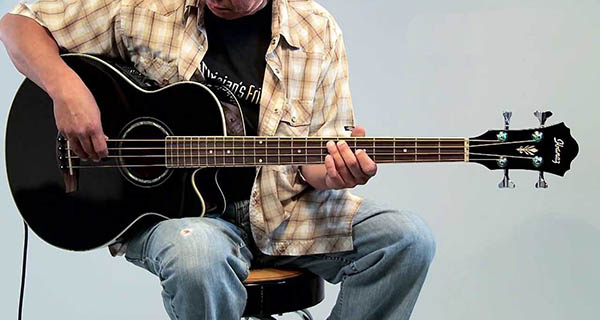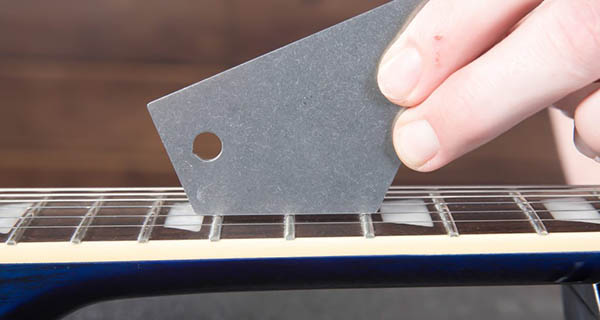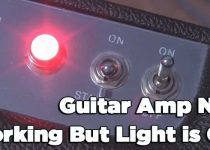How Much Fret Buzz is Normal Bass [Proper Way to Know]
Fret buzz is a common issue that bassists encounter, affecting the overall tone and playability of their instruments. Its acceptability can depend on various factors, including personal preferences, playing style & the type of guitar. Fret buzz occurs when a guitar string vibrates against a fret; it is producing an unwanted buzzing or rattling sound.
In general, some amount of fret buzz can be considered normal, especially on electric guitars, as they are typically set up with lower action (the distance between the strings and the fretboard) to allow for faster playing and ease of bending notes.

A low action can increase the likelihood of experiencing some level of fret buzz. Acoustic guitars generally have a higher action, which reduces the likelihood of fret buzz but can make certain playing techniques more challenging. It can be caused by factors such as the bass’s setup, string gauge, neck relief, and playing technique.
# Table of Contents =>
- 1 Proper Way to Know: How Much Fret Buzz is Normal Bass –
- 1.1 a) String gauge:
- 1.2 b) Neck relief:
- 1.3 c) Nut and saddle height:
- 1.4 d) Fret wear:
- 1.5 e) Playing style:
- 1.6 Determining Acceptable Fret Buzz on a Bass Guitar:
- 1.7 i) Electric Basses:
- 1.8 ii) Acoustic Basses:
- 1.9 To determine if the amount of fret buzz you’re experiencing is normal, consider the following steps:
- 1.10 a) Compare with other basses:
- 1.11 b) Evaluate your playing style:
- 1.12 c) Check individual frets:
- 1.13 d) Check Nut and Saddle:
- 1.14 e) Fret Leveling:
- 1.15 f) Adjust Truss Rod:
- 1.16 g) Play different techniques:
- 1.17 h) Consult a guitar technician:
Proper Way to Know: How Much Fret Buzz is Normal Bass –
Several factors can contribute to fret buzz:
a) String gauge:

Thicker strings have more tension, reducing the likelihood of buzzing. Lighter gauge strings might be more prone to fret buzz, especially when played with heavy strumming picking.
b) Neck relief:
The curvature of the guitar neck can affect fret buzz. Too much forward or backward bow (upward or downward curvature) can cause buzzing, and adjustments can be made using the truss rod.
c) Nut and saddle height:

If the nut slots or saddle are too low, the strings might vibrate against the frets, causing buzz.
d) Fret wear:

Worn-down frets can lead to buzzing, and a fret leveling or re-fretting might be necessary in extreme cases.
e) Playing style:
Heavy-handed playing bending can induce fret buzz, even on a well-set-up guitar.
Determining Acceptable Fret Buzz on a Bass Guitar:
The acceptability of fret buzz on a bass can be subjective, but certain guidelines can help:
i) Electric Basses:

Electric basses are typically set up with lower action for ease of playability. Consequently, some mild fret buzz might be acceptable, especially when playing with moderate force.
ii) Acoustic Basses:

Acoustic bass guitars usually have higher action, leading to reduced fret buzz. However, some very light buzzing might still be considered normal.
To determine if the amount of fret buzz you’re experiencing is normal, consider the following steps:
a) Compare with other basses:
If possible, compare your bass’s fret buzz with other bass guitars of the same type and setup to establish a reference point.
b) Evaluate your playing style:
Consider if you’re playing technique might be contributing to the fret buzz. Try adjusting your approach to see if it reduces the buzz.
c) Check individual frets:

Play each string at every fret, one at a time, listening for any buzzing sounds. Pay attention to specific frets or areas of the fretboard where the buzz is most noticeable.
d) Check Nut and Saddle:
Ensure that the nut slots and saddle are at the appropriate height, allowing the strings to vibrate freely without buzzing against the frets.
e) Fret Leveling:

In cases of severe fret wear or unevenness, consider getting a professional fret leveling or re-fretting to eliminate buzzing issues.
f) Adjust Truss Rod:

If the neck relief is improper, adjust the truss rod to achieve the correct amount of forward or backward bow in the neck.
g) Play different techniques:
Experiment with different playing styles, such as strumming, picking, and bending, to see if the fret buzz persists under various conditions.
h) Consult a guitar technician:
If you’re unsure about the severity of the fret buzz, take your guitar to a qualified technician. They can assess the instrument’s setup and make any necessary adjustments to minimize the buzz.
In the end, it’s subjective what counts as a “normal” fret buzz. Determining the acceptable level of fret buzz on a bass guitar involves a combination of objective assessment and personal preference. By understanding the factors that contribute to fret buzz and following the steps outlined in this guide.
It is important for bassists to set up their instruments optimally to achieve the best balance between playability and tone. When in doubt, seeking the advice of an experienced bass technician can be instrumental in resolving any fret buzz issues and improving overall bass performance. Hopefully, you understand the how much fret buzz is normal Bass.
Last Updated on August 19, 2023 by Perry Garner


